More than half of all homes in the United States are at least 40 years old. And, we all know that many older homes are not properly maintained.
We know from scientific research that significant home maintenance is required throughout the life of a home as it ages. In fact, that research shows that homes that are not adequately maintained have depreciated substantially as they reach 40 years of age. Insurance carriers should view a home that is over 30 years old, without evidence of maintenance, with some healthy skepticism.
Traditionally, insurance carriers haven’t had a way (other than through inspections) to assess the condition of a particular home. It seems clear that carriers would benefit greatly from a systematic way of knowing when homeowners undertake home maintenance projects and, even better, have third-party validation that the maintenance was done properly.
In fact, this information already exists. Significant home maintenance – work involving electrical, plumbing, mechanical, or structural elements – requires a building permit from the local city or county. And, not only is the work permitted, it is reviewed by state licensed inspectors (nearly 100,000 in all) who ensure it meets local building codes. In essence, there is an army of inspectors creating records documenting the significant maintenance history of the structures they inspect.
While the presence of permits seems intuitively to provide insight into property condition, we wanted hard evidence. Using a database of building permits from across the country we set out to prove this hypothesis: the presence of building permits (and the absence of building permits) correlates with better (and worse) property condition on homes that are 30 years and older. To test this hypothesis, we designed two tests that compare permit data with insurance data:
- Test 1: Does the presence/absence of permits correlate with an inspector’s recommendation to act or not to act after an insurance inspection?
- Test 2: Does the presence/absence of permits prior to the start of a policy year correlate with the total loss ratio during that policy year?
As part of the data test, we segmented building permit information assigning a “Permit Age Grade” to each address for a given policy year. The Permit Age categories are defined as follows:
Test 1: Does Permit Data Correlate to Inspector Findings?
For our inspection test, we looked at a large database of insurance inspections conducted on single-family homes over 30 years of age in Florida between 2010 and 2013. The database contained the address, date, and results of the inspection. Results indicate if an action was required on a policy (meaning the inspector found an issue with the home) or if no action was taken (the home was fine). Of note, most, but not all, of the issues identified during the inspection were concerns about property condition.
We took the addresses provided in the inspection database and assigned a “Permit Age Grade” based on the presence of permits as of the date of the inspection. The breakdown of grades across the entire database:
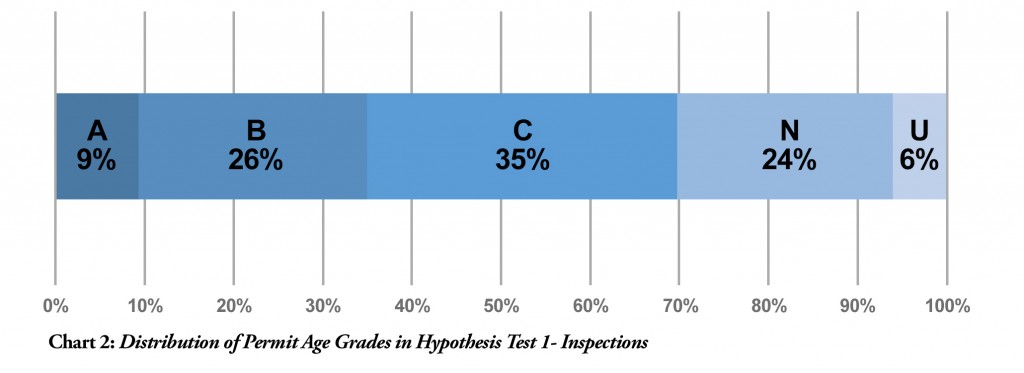 We then compared the inspection results with our assigned Permit Age Grade. The results were as follows:
We then compared the inspection results with our assigned Permit Age Grade. The results were as follows:
 Results: The data supports our hypothesis. Homes with recent permits were significantly less likely to have inspections that required action than homes that did not have recent permits.
Results: The data supports our hypothesis. Homes with recent permits were significantly less likely to have inspections that required action than homes that did not have recent permits.
Key Observations
- Carriers can prioritize inspections by focusing on the homes without permits in the past ten years. The majority of those homes may require action.
- By identifying which homes have recent permits carriers can significantly reduce their inspection costs by not inspecting homes with grades above a certain threshold. Eliminating inspections for A and B groups could save more than 30 percent.
Test 2: Do Building Permits Correlate with Loss?
For our loss analysis, we used a large database of insurance loss data for single-family homes over 30 years of age in Texas with policy years between 2005 and 2010. The database contained the address, a policy inception date, and the loss history of that address in that policy year.
We took the addresses provided in the loss database and assigned a Permit Age Grade as of the policy inception date. The breakdown of grades across the entire database were as follows:
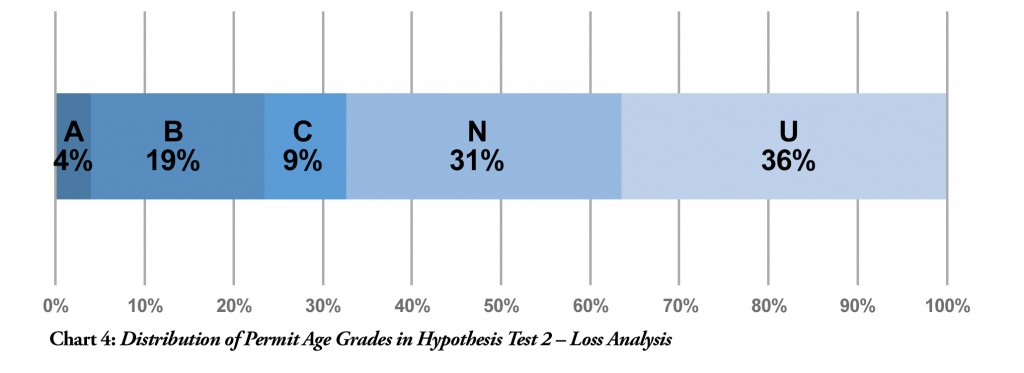 We then compared the total loss ratios over the policy year with the assigned Permit Age Grade. The results were as follows:
We then compared the total loss ratios over the policy year with the assigned Permit Age Grade. The results were as follows:
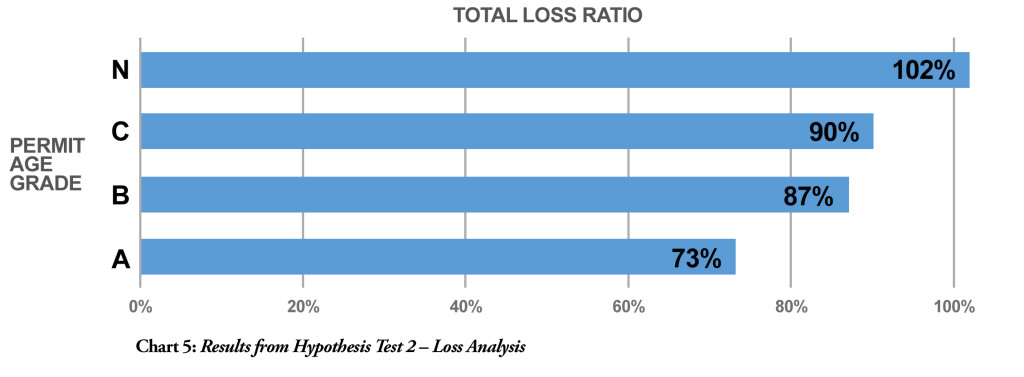 Results: Again, the results support our hypothesis. The presence of recent permits correlates with homes with less loss, and the absence of permits for at least 10 years correlates with homes with more loss.
Results: Again, the results support our hypothesis. The presence of recent permits correlates with homes with less loss, and the absence of permits for at least 10 years correlates with homes with more loss.
Key Observations
- Permit presence/absence over a ten-year period is predictive of overall loss.
- The carrier in this study was not pricing on using building permit information, and in our investigations, very few carriers do.
- The more recent the permit, the lower the associated loss ratio.
Putting These Findings into Practice
How can insurance carriers use permit information to better manage risk? We are seeing carriers put permit age information to work in three ways:
- Inspection Optimization: Inspections models can be modified to include permit activity. Permit date and total job cost can both be used as model inputs. Carriers have seen immediate significant value by eliminating condition-focused inspections on properties with recent permit activity and prioritizing the inspection of properties with an absence of recent permit activity.
- Discounts: Some carriers combine a surcharge on older homes and a discount for recent maintenance work (proof of work could be building permits, receipts, etc.). In addition, they target market to homeowners who have done recent maintenance work.
- Rate Plans: We are starting to see movement on rating on “permit age” or a similar value as a relative estimate of property maintenance.
Concluding Thoughts
As the U.S. housing stock ages (currently estimated at a median of 40 years), property maintenance becomes a larger factor in assessing the overall risk profile of a property. Building permits have a direct correlation with property maintenance. Key takeaways from our research:
- Nearly 100,000 state licensed inspectors are reviewing and documenting everything from remodels and additions to trade work (i.e. electrical, mechanical and plumbing).
- The presence of permits is a good indicator of property maintenance, and the more recent a permit, the better.
- Older homes without a recent permit are likely to require follow up action on inspections and are associated with a substantially higher loss ratio.
- Carriers can use the permit age grade to more accurately deploy inspection resources, offer customers maintenance discounts, and modify rate plans.
The Continuing Conversation
If you have any questions, comments, or suggestions on the research and analysis we have outlined in this paper, we would love to hear from you at 855-237-8711. For a full copy of this or other BuildFax research visit: http://www.buildfax.com/researchdownload.html.
A research paper by BuildFax co-founders, Holly Tachovsky, CEO and Joe Emison, CTO. BuildFax collects and organizes construction records on millions of U.S. properties.
 Data industry thought leader Tachovsky has led her pioneering team to take BuildFax from “a cool idea” to its current industry-changing trajectory. She is a sought after speaker and panelist at industry events across the country.
Data industry thought leader Tachovsky has led her pioneering team to take BuildFax from “a cool idea” to its current industry-changing trajectory. She is a sought after speaker and panelist at industry events across the country.
 Emison oversees BuildFax’ cloud architecture and frequently speaks on cloud architecture, scaling in the cloud and cutting costs in the cloud.
Emison oversees BuildFax’ cloud architecture and frequently speaks on cloud architecture, scaling in the cloud and cutting costs in the cloud.
Was this article valuable?
Here are more articles you may enjoy.

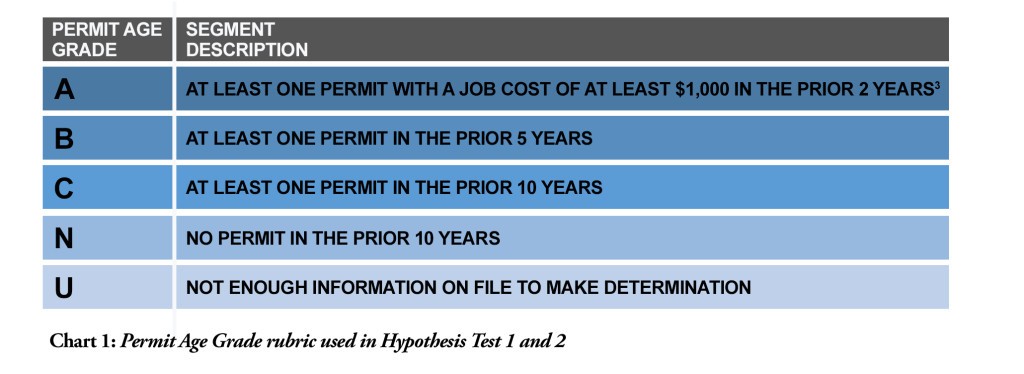
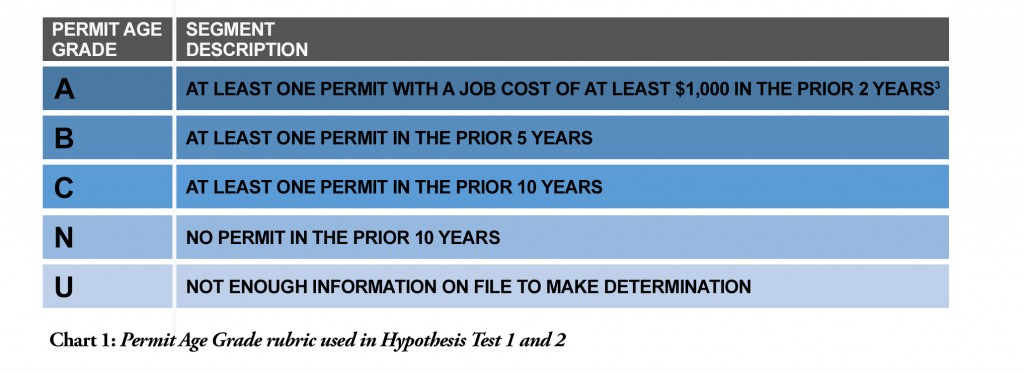
 J&J Talc Jury Awards $1.56 Billion to Asbestos Cancer Victim
J&J Talc Jury Awards $1.56 Billion to Asbestos Cancer Victim  Flooding in California Leads to Soaked Roads, Water Rescues and 1 Death
Flooding in California Leads to Soaked Roads, Water Rescues and 1 Death  Instacart to Pay $60 Million in FTC Consumer Protection Case
Instacart to Pay $60 Million in FTC Consumer Protection Case  Poorer Americans Dropped Federal Flood Insurance When Rates Rose
Poorer Americans Dropped Federal Flood Insurance When Rates Rose 